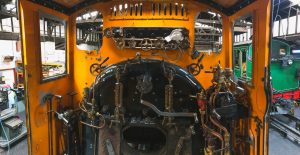
The day creeps ever closer when we can strike a match and light the pile of oily rags for the first time. That’s not to say everything has gone exactly to plan; we have certainly had our fair share of snakes as well as ladders in getting to this stage!
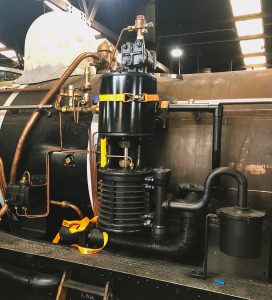
- With the air brake system tested, the compressor was stripped down to allow fitting of the Nathan mechanical lubricator, seen on the left in the photo above. The addition of this unit alleviates the need for fitting a hydrostatic lubricator in the cab, such as is fitted to G42 and our NA class locomotives. the unit on the right is the air filter box.
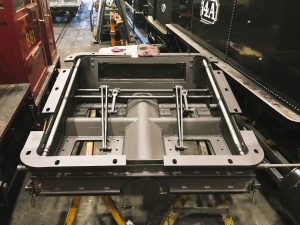
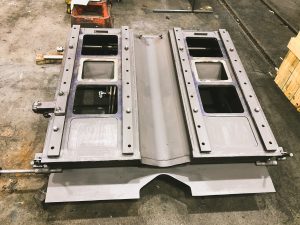
- The ashpan was removed from the loco to allow fitting out to be completed. Bottom slides, dampers, ash arrestors and drench pipework have all been fitted and the ashpan painted and reunited with the boiler’s foundation ring. Unlike the original NG/G13 and NG/G 16 design, which see’s the ashpan mounted to the boiler cradle independently of the boiler, we have modified the design to bolt the ashpan directly to the foundation ring, creating a seal against spark emissions.
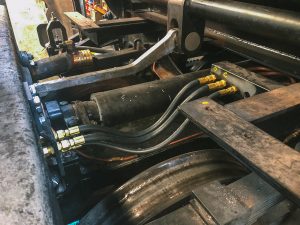
- Lubrication pipework is all but finished, and attention is focused on the mechanical lubricator drives now that the water tank and coal bunker, which hold the intermediate brackets, are bolted in place.
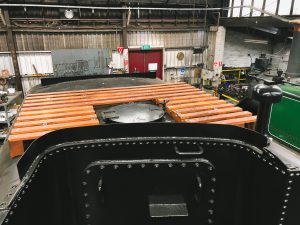
- The timber walkway on top of the water tank has been completed and installed. This provides a safe platform for loco crews when topping up the water tanks.
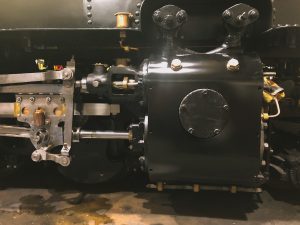
- Cladding has been manufactured, painted, and fitted to all four cylinders, and the decorative stainless steel cylinder end covers fixed up and attached.
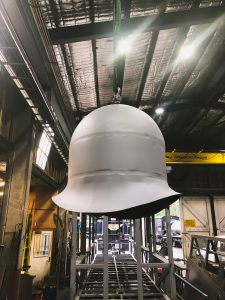
- The dome cover had been cleaned, straightened, filler applied and sanded ready to start painting.
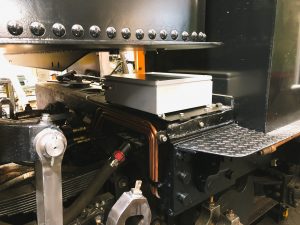
- The cabinet for the digital radio has been fitted out and is ready for installation, shown here whilst investigating possible mounting positions. At the same time, components for the GPS speed recorder unit have been ordered ready for the unit to be assembled and tested.
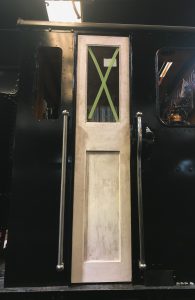
- Cab doors are fitted, and door locks have been fabricated and installed.
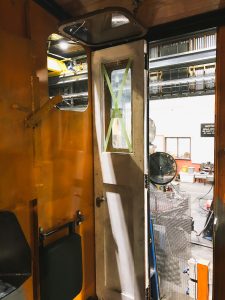
- Cab seats are installation, complete with upholstered cushions. Sadly the ubiquitous swing out seats, as fitted to these engines in South African Railways service, did not make the cut, and therefore won’t be a feature on this locomotive!
- The Notification of Change paperwork has been submitted to ONRSR (the national rail regulator), and a response is awaited. In the meantime, operating and maintenance manuals, which will be required ready for when the locomotive enters traffic, are in the course of preparation.
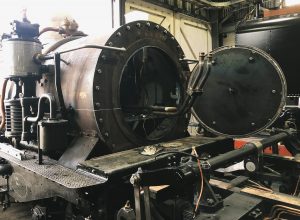
- The boiler had its hydraulic test which identified a leak between the dry pipe from the regulator valve and the smokebox tubeplate. Luckily, the removal of a number of superheater elements allowed the flange bolts to be re-tightened, sealing the leak.
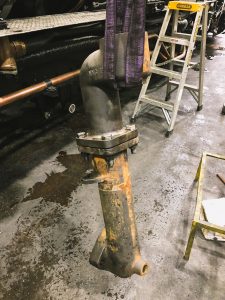
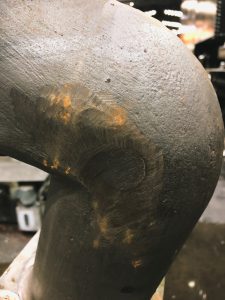
- Inspection of the regulator body and standpipe following the hydraulic test revealed a fault in manufacture; small metal plugs, called Chaplets, form part of the system used to located the core when casting the pipes, and in this case had failed to fuse with the cast material, showing signs of movement following the application of pressure. Luckily our friends at the Ffestiniog & Welsh Highland Railway managed to find a set without the fault and got them on a plane to Melbourne as quick as you like!
